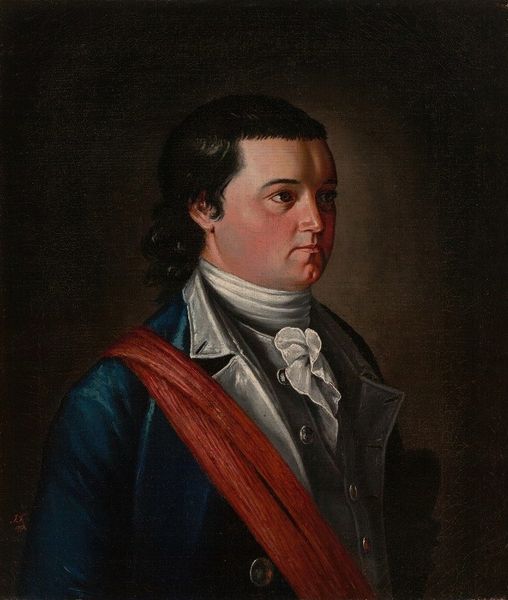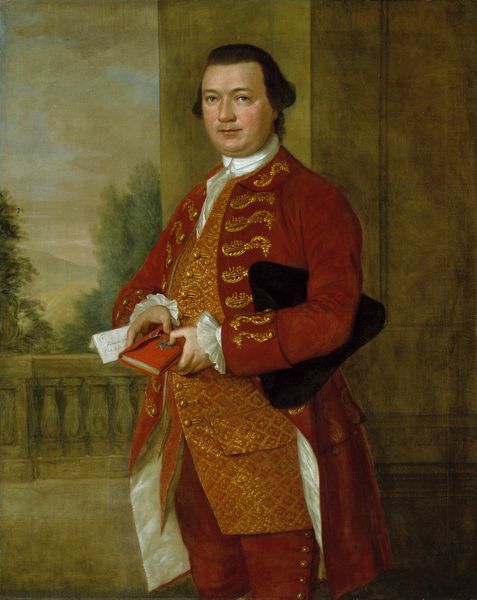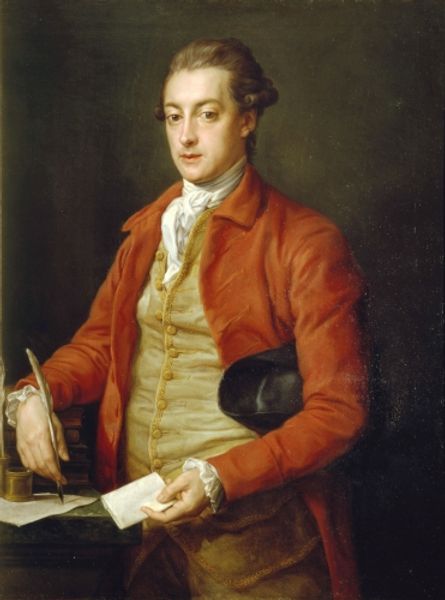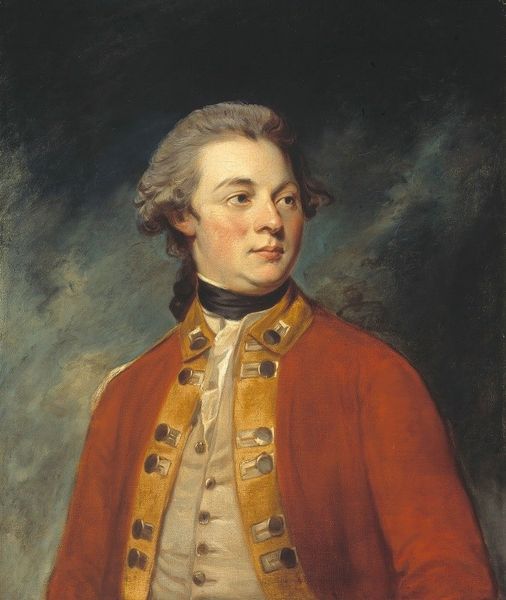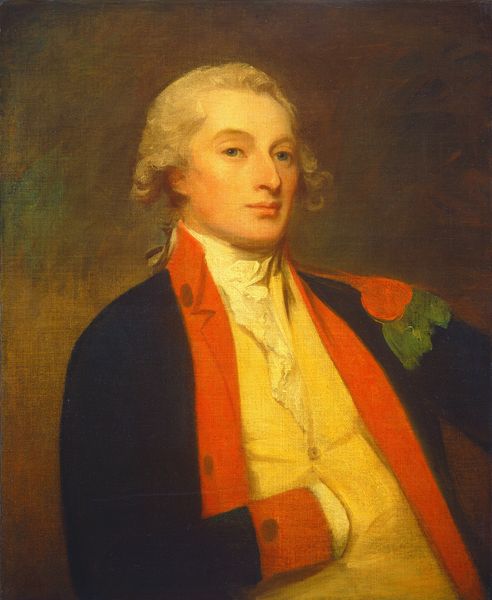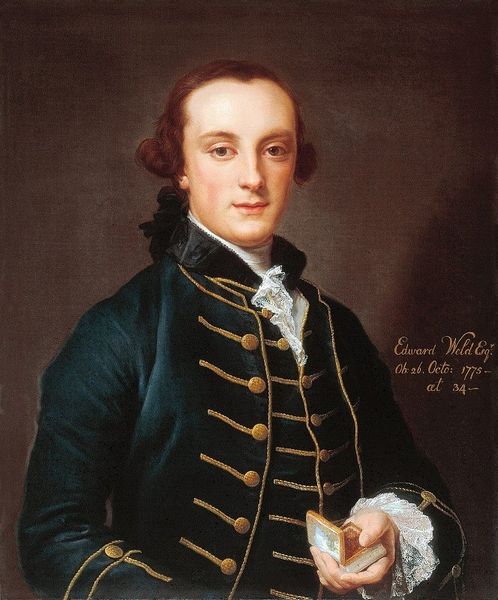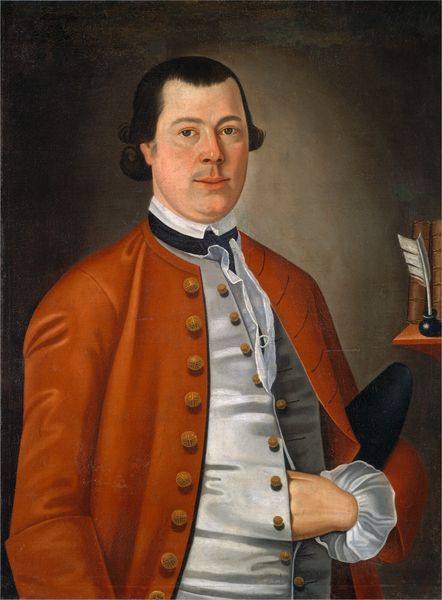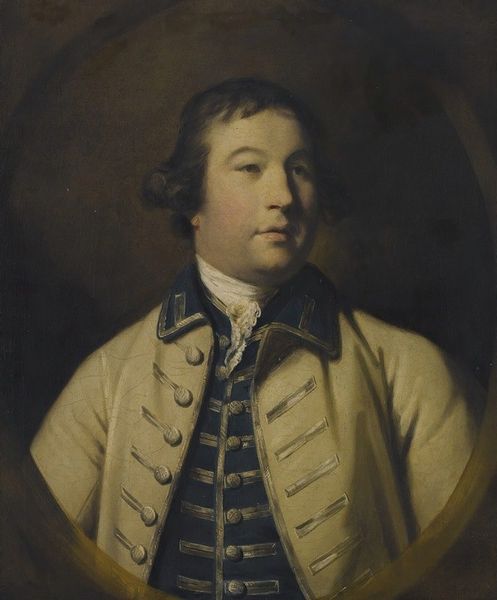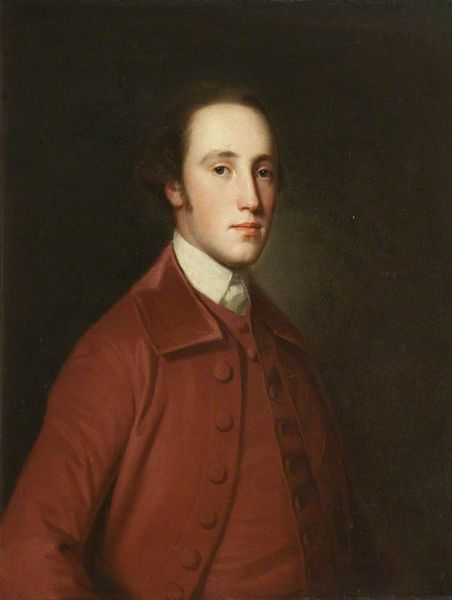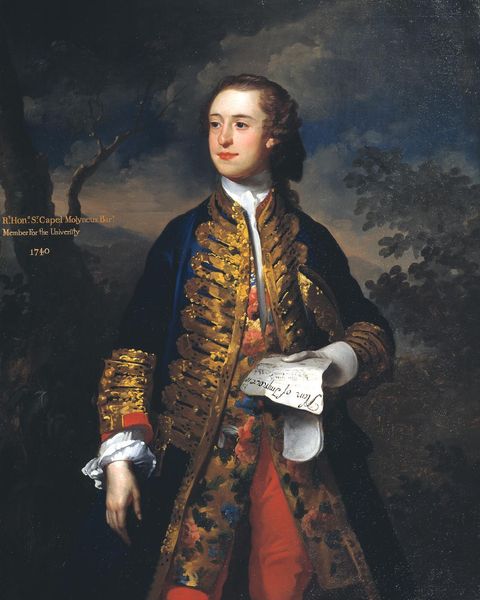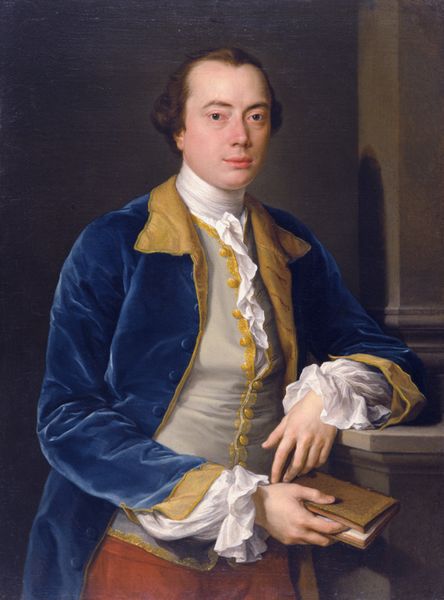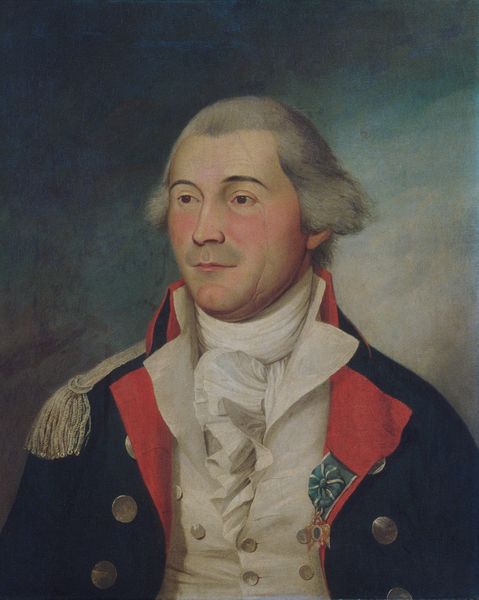
Copyright: Public domain
Curator: Here we have Charles Willson Peale's "Nathaniel Ramsay," an oil on canvas portrait painted in 1833. Editor: Immediately striking is the subdued intensity. The muted palette, dominated by that brick-red coat, gives the subject a gravity beyond just portraiture. Curator: Indeed. It's important to recognize that Peale painted this well into his own long life. We can look at his work alongside the backdrop of burgeoning American nationhood, grappling with issues of identity. Who were these leaders? How did they want to be seen? Editor: And considering the historical moment, the very idea of capturing someone's likeness—of literally possessing their image—carries colonial weight, especially when access to portraiture was inherently class-based and racialized. Was this for public veneration or private legacy building? Curator: Both, certainly, and often intertwined. Ramsay, of course, was a prominent figure, a Continental Congressman. Note the book; its placement signifies learning and intellectual pursuits, a clear message. Peale had a profound sense of his own place in posterity too; how do we read Ramsay's intellectual bearing through the lens of Peale's artistic choices, his role as a painter of revolutionaries? Editor: The staging is masterful, no doubt, yet slightly unnerving. The softness in his gaze doesn't quite align with the severe tailoring of his coat or that stark white collar. Is this an intentional softening, perhaps meant to humanize Ramsay's political ambitions? A curated intimacy? Curator: Perhaps Peale, consciously or unconsciously, presents Ramsay at a moment of inflection, a tension between personal ambition and a rapidly transforming societal landscape. After all, American ideals were not uniformly accessible, and portraiture actively participated in crafting this historical narrative. Editor: So even in this seemingly straightforward depiction, we see a negotiation of power, identity, and historical representation, underscoring that art is never truly neutral, but active in shaping how we remember the past.
Comments
No comments
Be the first to comment and join the conversation on the ultimate creative platform.
